Sharks are fascinating and diverse creatures that inhabit the oceans around the world. From the iconic Great White Shark to the lesser-known Goblin Shark, each species has unique characteristics and adaptations that make them well-suited to their environments. In this article, we will explore and explain each type of shark, shedding light on their distinctive features, behaviors, habitats, and conservation status.
World of Sharks
Sharks are an ancient group of fish roaming the oceans for millions of years. With over 500 known species, they come in an incredible array of sizes, shapes, and habitats. While some are swift predators, others are slow-moving bottom-dwellers. Sharks play a vital role in maintaining the balance of marine ecosystems, and understanding their diversity is essential for their conservation.

1. Pacific Sleeper Shark: Deep and Sluggish
The Pacific Sleeper Shark (Somniosus pacificus) is a large, slow-moving shark inhabiting cold-water regions. Despite its sluggish nature, it is an opportunistic predator and scavenger.

2. Megalodon: The Ancient Giant
The Megalodon (Carcharocles megalodon) is perhaps the most famous prehistoric shark. This colossal predator lived approximately 2.6 million years ago and is believed to have reached lengths of up to 60 feet. With its massive teeth and powerful jaws, Megalodon was the apex predator of its time, preying on large marine mammals.

3. Whale Shark: Gentle Giant of the Seas
The Whale Shark (Rhincodon typus) is the largest fish in the world and is known for its peaceful nature. Despite its size, it primarily feeds on plankton and small fish, using its wide mouth to filter food from the water. This filter-feeding strategy places it in the category of harmless sharks.

4. Tiger Shark: The Opportunistic Predator
Tiger Sharks (Galeocerdo cuvier) are known for their distinctive stripes and voracious appetite. These apex predators have a reputation for eating almost anything, earning them the nickname “wastebasket of the sea.” Their wide diet includes fish, turtles, birds, and even inedible objects.

5. Basking Shark: Filter-Feeding Marvel
The Basking Shark (Cetorhinus maximus) is the second-largest fish and is often seen near the ocean’s surface with its large mouth open. Despite its size, it primarily consumes zooplankton and small fish by swimming with its mouth wide open, allowing water to pass through its gill rakers.
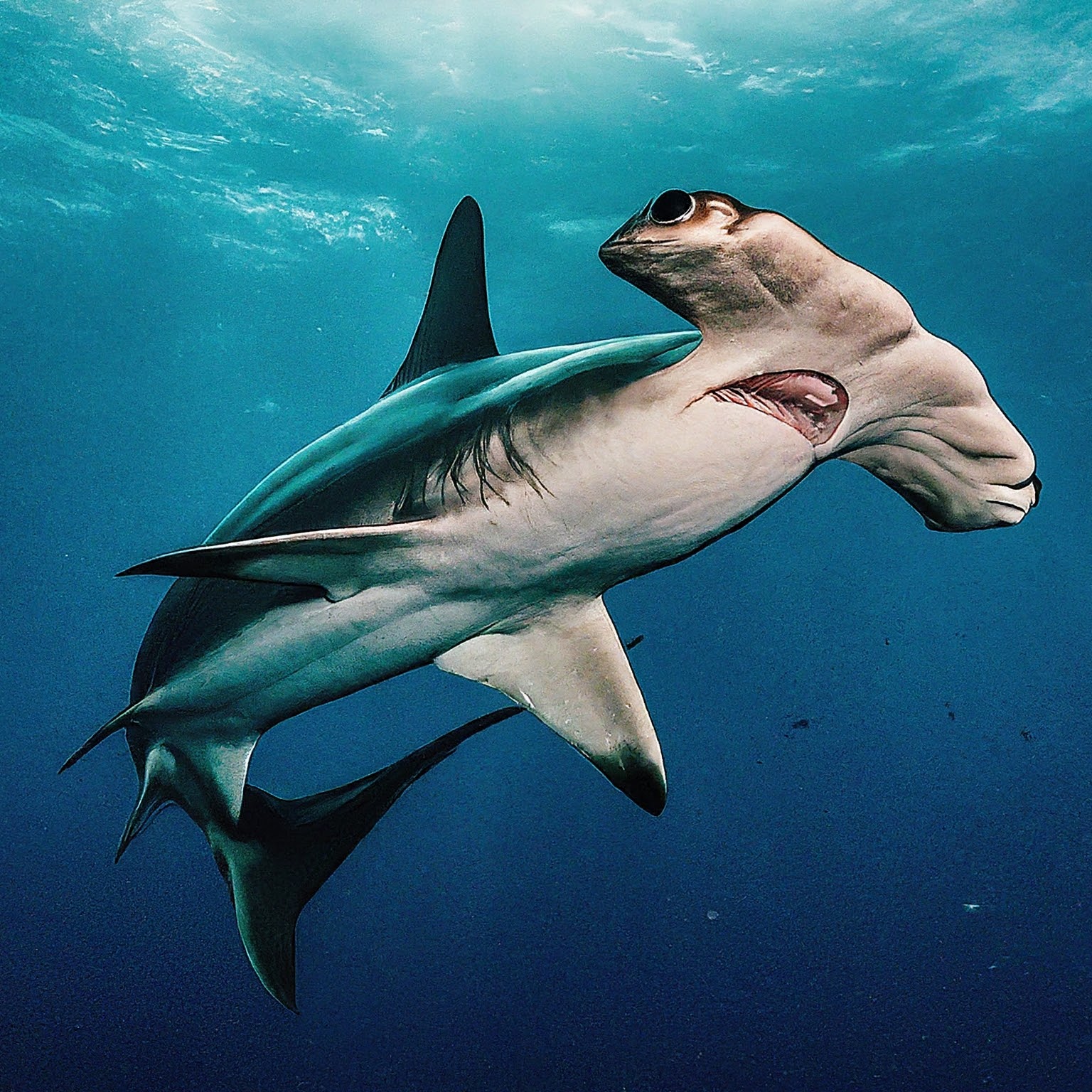
6. Hammerhead Shark: Uniquely Shaped Hunter
Hammerhead Sharks (Sphyrnidae) are instantly recognizable by their unique T-shaped heads. This distinctive head shape, known as a cephalofoil, gives them an advantage in locating prey and maneuvering through the water. Hammerheads are diverse, with different species adopting various lifestyles and habitats.

7. Bull Shark: Thriving in Fresh and Salt Waters
Bull Sharks (Carcharhinus leucas) are known for their ability to tolerate both saltwater and freshwater environments. They are often found in coastal and estuarine areas, and their aggressive nature has earned them a reputation as one of the more dangerous shark species for humans.
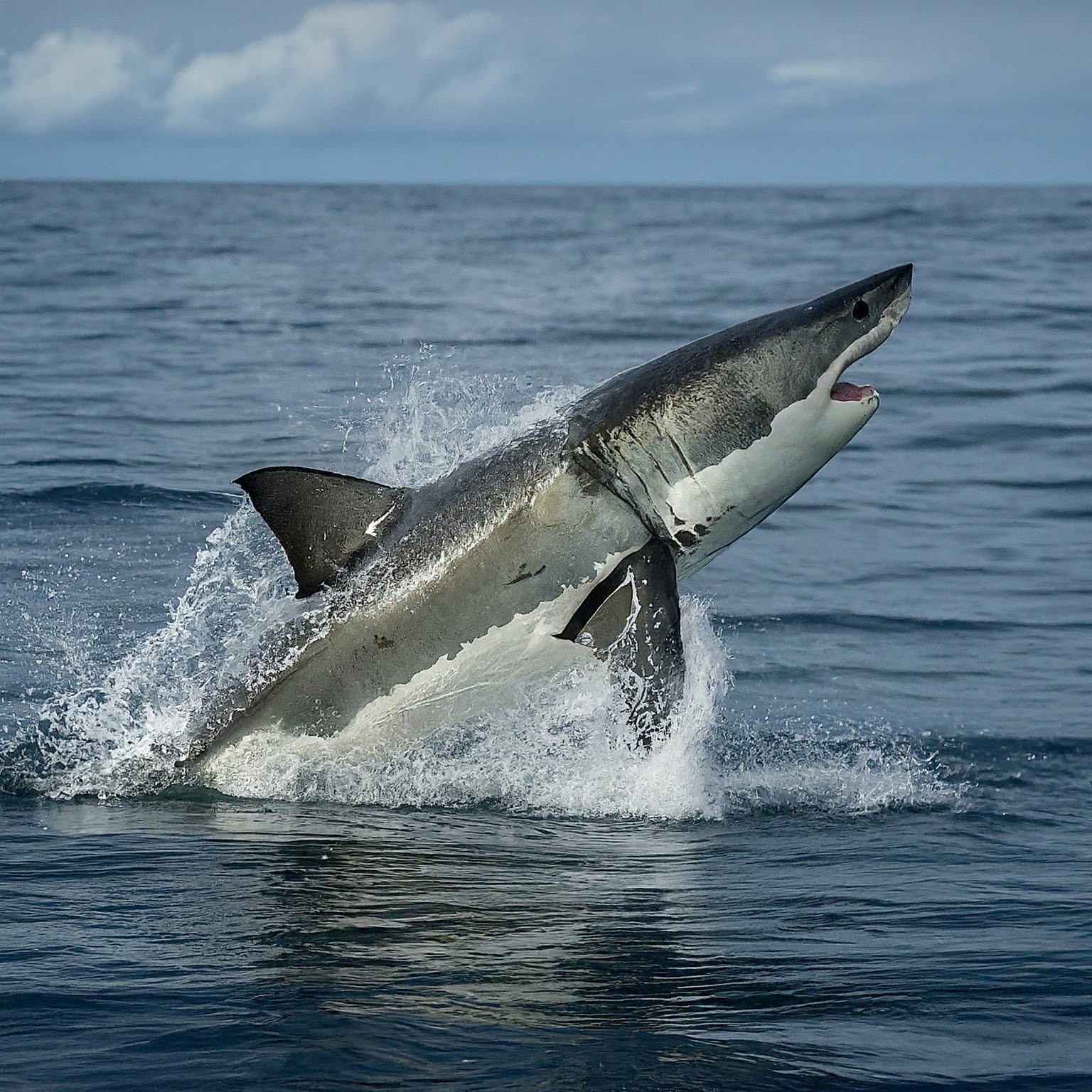
8. Great White Shark: Apex Predator of the Ocean
The Great White Shark (Carcharodon carcharias) is the quintessential apex predator of the ocean. With its powerful body and impressive teeth, it is a formidable hunter. While their portrayal in popular media often emphasizes their danger to humans, these sharks are crucial to maintaining the health of marine ecosystems.

9. Goblin Shark: Deep-Sea Enigma
The Goblin Shark (Mitsukurina owstoni) is a rare and enigmatic species that inhabits the deep-sea environment. Its most distinctive feature is its protrusible jaws, which can extend to catch prey. Goblin Sharks are often encountered as bycatch by deep-sea fishing operations.

10. Lemon Shark: Coastal Explorer
Lemon Sharks (Negaprion spp.) are found in warm coastal waters and estuaries. Their name comes from their pale yellowish coloration. These sharks play a vital role in maintaining the health of coastal ecosystems by controlling prey populations and participating in nutrient cycling.

11. Shortfin Mako Shark: Speed and Agility
The Shortfin Mako Shark (Isurus oxyrinchus) is one of the fastest sharks, capable of reaching speeds of over 60 mph. This incredible speed makes it an agile predator, often preying on fast-swimming fish. Makos are highly sought after by sport fishermen for their strength and speed.

12. Nurse Shark: Bottom-Dwelling Scavenger
Nurse Sharks (Ginglymostoma cirratum) are relatively slow-moving and prefer shallow coastal waters. They are often found resting on the ocean floor during the day. Despite their sluggish appearance, they are skilled scavengers, using their powerful jaws to crush and consume prey.

13. Cookiecutter Shark: Mysterious Biter
The Cookiecutter Shark (Isistius brasiliensis) is a small and elusive species that is known for its unique feeding behavior. It uses its specialized teeth to take circular “cookie cutter” bites out of larger animals, including whales and dolphins.

14. Frilled Shark: Ancient Living Fossil
The Frilled Shark (Chlamydoselachus anguineus) is often referred to as a “living fossil” due to its primitive appearance. With its eel-like body and rows of fringed gills, this deep-sea dweller provides valuable insights into the early stages of shark evolution.

15. Blue Shark: Graceful Ocean Wanderer
The Blue Shark (Prionace glauca) is known for its striking blue coloration and graceful swimming style. These sharks are highly migratory and can cover vast distances in search of food. They are often encountered by deep-sea anglers due to their curious nature.

16. Zebra Shark: Energetic and Playful
The Zebra Shark (Stegostoma fasciatum) gets its name from the zebra-like stripes it displays as a juvenile. As they mature, these stripes transform into spots. Zebra Sharks are known for their playful behavior and are often seen resting on the seabed.

17. Thresher Sharks: Swinging Tail Predators
Thresher Sharks (Alopiidae) are recognized by their extraordinarily long upper caudal fin lobes, which they use as a hunting tool. They are known for stunning prey by using their tails to create a shockwave, making them easier to capture.

18. Megamouth Shark: The Enigmatic Filter-Feeder
The Megamouth Shark (Megachasma pelagios) is one of the rarest shark species, discovered in 1976. It gets its name from its large mouth and is a filter-feeder, primarily consuming plankton. Megamouth Sharks inhabit the deep ocean and are seldom encountered by humans.

19. Leopard Shark: Coastal Camouflaged Beauty
Leopard Sharks (Triakis semifasciata) are characterized by their distinctive dark spots and stripes, which provide effective camouflage in sandy and rocky coastal areas. These docile sharks are popular among divers and snorkelers.
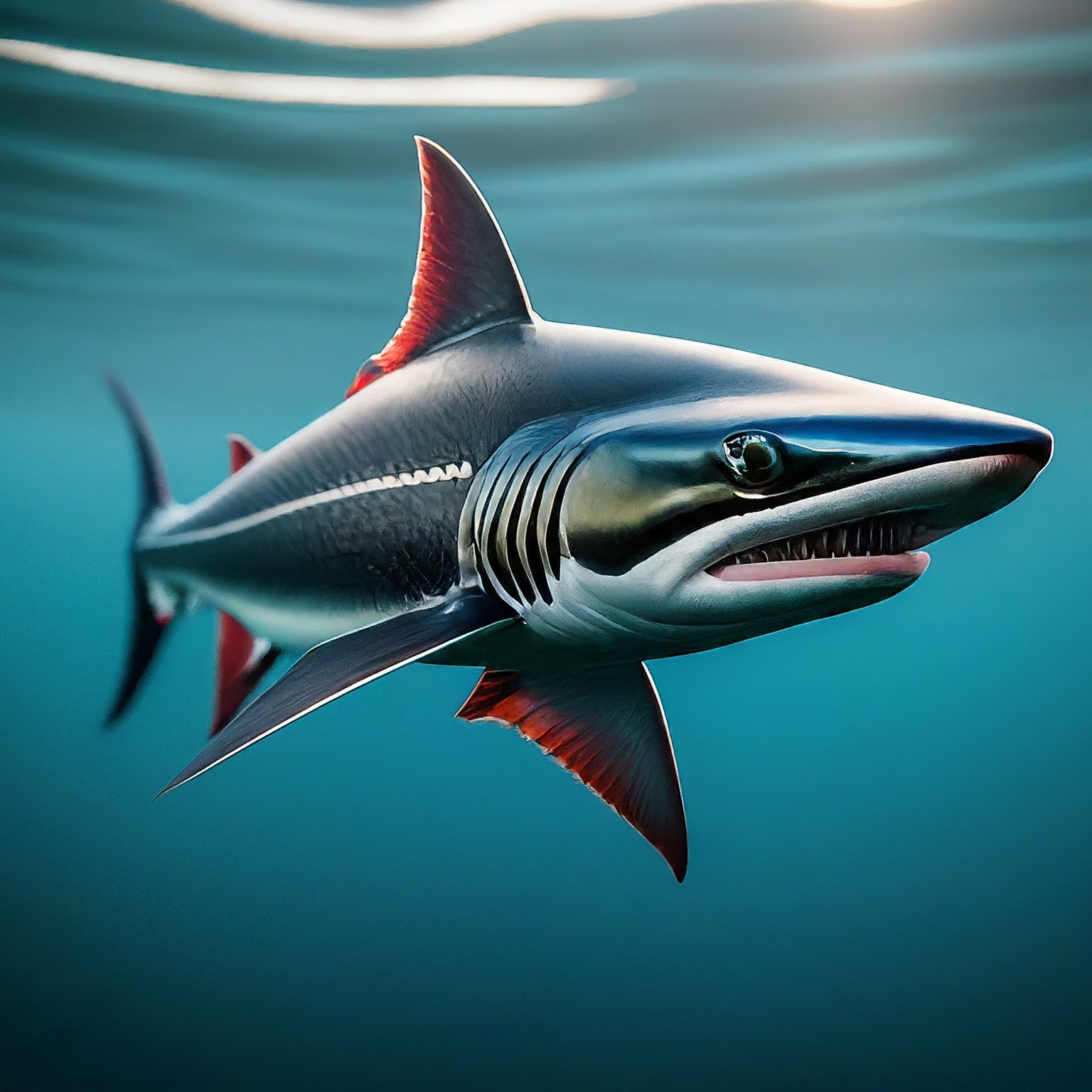
20. Salmon Shark: Cold-Water Hunter
The Salmon Shark (Lamna ditropis) is a close relative of the Great White Shark and is often found in cold-water regions. As their name suggests, they frequently prey on salmon, making them an important predator in marine food chains.

21. Sand Tiger Shark: Surprisingly Peaceful
Despite their fierce appearance, Sand Tiger Sharks (Carcharias taurus) are relatively docile and not a significant threat to humans. They often hover near the seabed and are known for gulping air at the water’s surface, which helps regulate their buoyancy.

22. Spiny Dogfish: Endurance Swimmer
The Spiny Dogfish (Squalus acanthias) is one of the most abundant shark species. They are well-adapted to a wide range of temperatures and can be found in both cold and temperate waters. Spiny Dogfish have a unique method of reproducing known as aplacental viviparity.

23. Blacktip Reef Shark: Coral Reef Resident
Blacktip Reef Sharks (Carcharhinus melanopterus) are commonly found in coral reef environments. Their black-tipped fins are a distinctive feature. They play an essential role in maintaining the health of coral reef ecosystems by controlling prey populations.

24. Greenland Shark: Cold and Slow-Moving Giant
The Greenland Shark (Somniosus microcephalus) is one of the largest shark species, reaching lengths of up to 24 feet. It is known for its slow metabolism and preference for cold-water habitats. Greenland Sharks are found in the Arctic and North Atlantic oceans.

25. Wobbegong: Master of Camouflage
Wobbegongs (Orectolobidae) are a family of bottom-dwelling sharks known for their intricate camouflage patterns. These ambush predators often lie motionless on the seafloor, waiting for unsuspecting prey to come close.

26. Oceanic Whitetip Shark: Open Ocean Wanderer
The Oceanic Whitetip Shark (Carcharhinus longimanus) is well-suited for life in the open ocean. Known for their distinctive white-tipped dorsal and pectoral fins, these sharks are often associated with shipwrecks and are known scavengers.

27. Catshark: Small and Diverse
Catsharks (Scyliorhinidae) are a diverse family of small sharks found in a variety of marine environments. They are characterized by their slender bodies and distinctive patterns. Catsharks are often nocturnal predators.
28. Blacktip Shark: Coastal Speedster
Blacktip Sharks (Carcharhinus limbatus) are fast and agile predators often found near coastlines. They are known for their acrobatic leaps out of the water, which may be a hunting strategy or a response to threats.

29. Sawshark: Unconventional Predator
Sawsharks (Pristiophoridae) have a unique rostrum, or “saw,” lined with sharp teeth. They use this saw to slash at schools of fish, stunning or injuring their prey. Sawsharks are relatively small and are found in deep-sea habitats.

30. Horn Shark: Coastal Invertebrate Eater
Horn Sharks (Heterodontus spp.) are known for their unique appearance, including a distinctive “horn” on their dorsal fin. They primarily feed on invertebrates such as crabs and sea urchins, using their strong jaws to crush shells.

31. Japanese Bullhead Shark: Coastal Nocturnal Hunter
The Japanese Bullhead Shark (Heterodontus japonicus) is a small shark that inhabits shallow coastal waters. It is a nocturnal predator that feeds on a variety of prey, including crustaceans and small fish.

32. Porbeagle: Cold-Water Challenger
The Porbeagle (Lamna nasus) is a fast and powerful shark found in cold-water regions. It is often mistaken for a Great White Shark due to its similar appearance. Porbeagles are valued by commercial and recreational fishermen.

34. Sandbar Shark: Coastal Cruiser
Sandbar Sharks (Carcharhinus plumbeus) are large coastal sharks commonly found in warm-temperate waters. They prefer shallow coastal areas and are often observed near sandy bottoms.

35. Gummy Shark: Deep and Mysterious
Gummy Sharks (Mustelus spp.) are named for their smooth, rubbery skin texture. gummy shark (Mustelus antarcticus) They are primarily found in the waters of Australia and New Zealand and often inhabit deeper oceanic areas.

36. Whitetip Reef Shark: Nocturnal Hunter
The Whitetip Reef Shark (Triaenodon obesus) is a common sight in coral reef environments. Its distinctive whitetip fins make it easily recognizable. These sharks are most active at night, hunting for prey under the cover of darkness.

37. Bluntnose Sixgill Shark: Deep-Sea Scavenger
The Bluntnose Sixgill Shark (Hexanchus griseus) is a primitive species that resides in the deep-sea environment. Its lack of an anal fin and distinctive six gills distinguish it from other shark species.
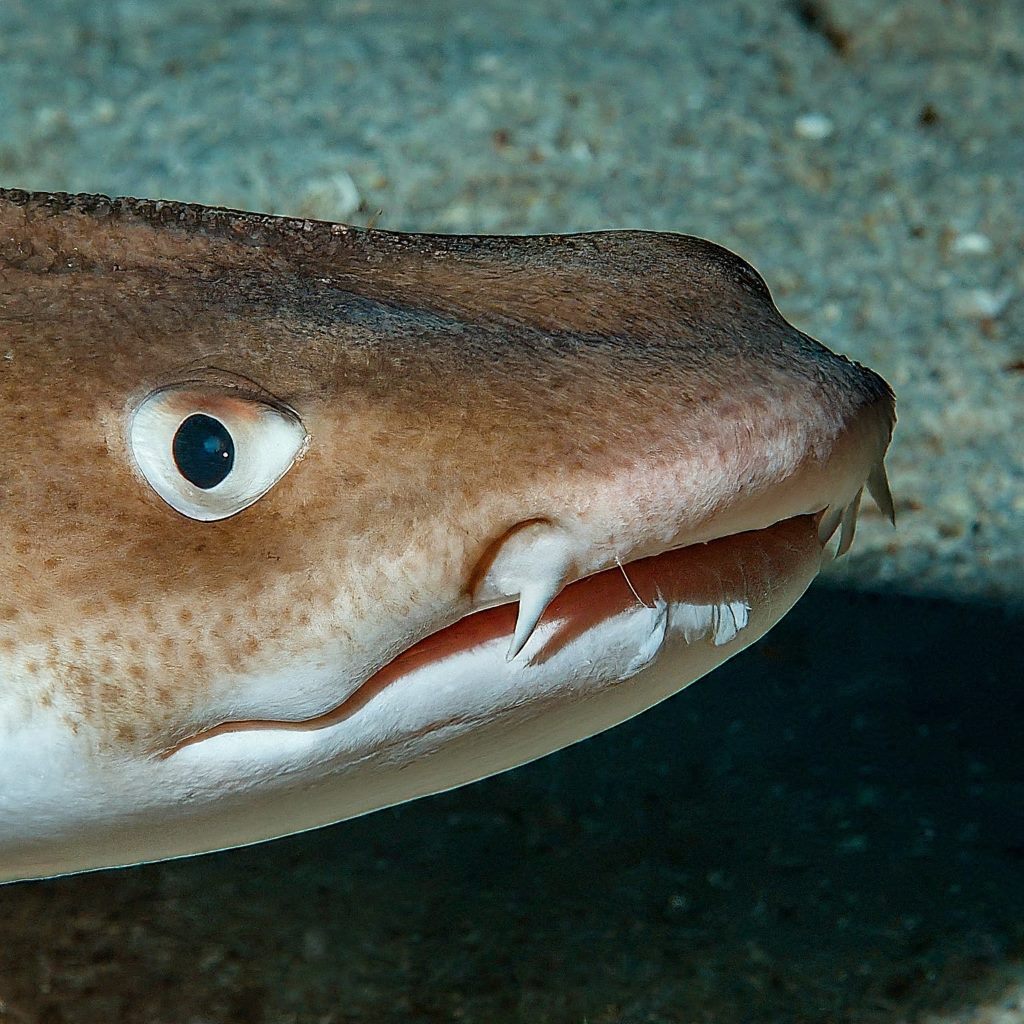
38. Dogfish Sharks: Diverse and Abundant
Dogfish Sharks (Squalidae) are a family of sharks that includes various species inhabiting different oceanic zones. They have spines on their dorsal fins and are often encountered as bycatch in commercial fisheries.

39. Mackerel Sharks: Fast and Powerful
Mackerel Sharks (Lamniformes) include species like the Porbeagle and the Salmon Shark. These sharks are adapted for fast swimming and are known for their powerful jaws. They are important predators in their respective ecosystems.

40. Cow Sharks: Ancient and Elusive
Cow Sharks (Hexanchiformes) are an ancient group of sharks with unique features. They often inhabit deep-sea and cold-water environments and have six or seven gill slits instead of the typical five found in most sharks.
41. Small-Spotted Catshark: Coastal Resident
The Small-Spotted Catshark (Scyliorhinus canicula) is a common catshark species found in the northeastern Atlantic Ocean and Mediterranean Sea. It is known for its small size and distinctive pattern of spots.

42. Dwarf Lanternshark: Tiny Bioluminescent Wonder
The Dwarf Lanternshark (Etmopterus perryi) holds the title of the world’s smallest shark, reaching lengths of only a few inches. It inhabits deep-sea waters and possesses the ability to produce bioluminescent light.

43. Dusky Shark: Nocturnal Predator
The Dusky Shark (Carcharhinus obscurus) is often found in warm-temperate and tropical waters. It is a relatively large species known for its dusky coloration and preference for hunting at night.

44. Kitefin Shark: Deep and Mysterious
The Kitefin Shark (Dalatias licha) is a deep-sea dweller that inhabits cold-water regions. It is characterized by its long, kite-shaped tail and its unique adaptations for surviving in the deep ocean.

45. Angelsharks: Hidden Ambush Predators
Angelsharks (Squatina spp.) are a diverse group of flattened sharks that share the common feature of burying themselves in sandy or muddy habitats and ambushing prey that ventures too close.

46. Sand Sharks: Stealthy Bottom-Dwellers
Sand Sharks (Carcharhinus plumbeus) are a group of coastal sharks known for their sandy coloration and preference for sandy seabed habitats. They are adept at stalking prey and using their keen senses to locate food.
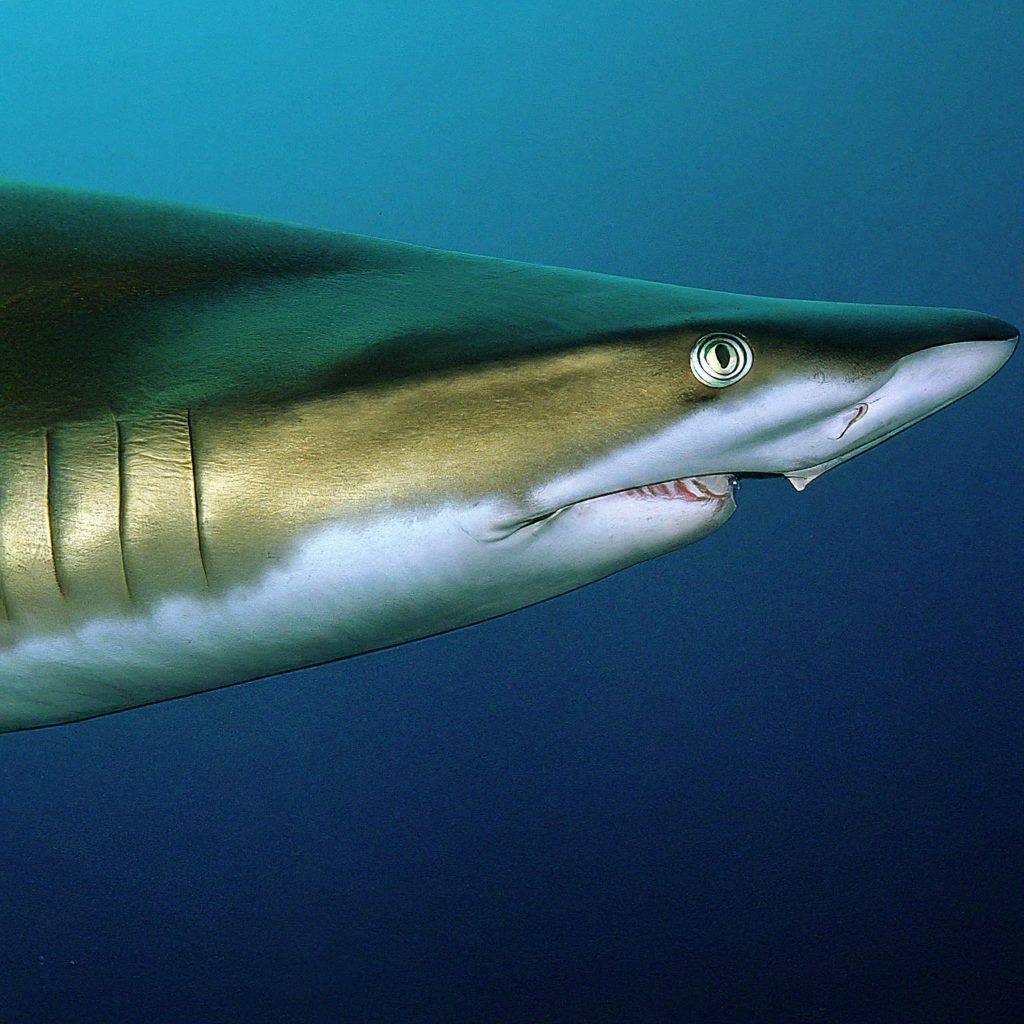
47. Port Jackson Shark: Coastal Egg-Layer
The Port Jackson Shark (Heterodontus portusjacksoni) is a bottom-dwelling species found along the southern coasts of Australia. It is known for its distinctive appearance, with harness-like markings on its body.

48. Silky Shark: Open Ocean Migrant
The Silky Shark (Carcharhinus falciformis) is often found in warm oceanic waters and is known for its smooth and silky skin texture. It is a migratory species that can cover vast distances in search of food.
49. School Shark: Formerly Abundant
The School Shark (Galeorhinus galeus), also known as the Tope Shark, is a species of houndshark. It was once abundant but has faced overfishing in some areas, leading to conservation concerns.

50. Angular Roughshark: Deep-Sea Dweller
The Angular Roughshark (Oxynotus centrina) is a deep-sea shark that inhabits the eastern Atlantic Ocean and Mediterranean Sea. It has a robust body and unique angular fin spines.

51. Requiem Sharks: Predators of the Tropics
Requiem Sharks (Carcharhinidae) are a diverse family of sharks found in warm-temperate and tropical waters. They play important roles in marine ecosystems as both predators and scavengers.
Conclusion
The world of sharks is incredibly diverse, with each species adapted to its own unique niche within the marine ecosystem. From the massive Megalodon of the past to the elusive creatures of the deep sea, sharks continue to captivate and intrigue researchers, conservationists, and the general public alike. Understanding the characteristics and behaviors of different shark species is essential for their conservation and maintaining our oceans’ health and balance.
